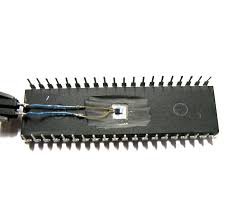 Break IC PIC16C74 Code
Break IC PIC16C74 Code

Break IC PIC16C74 Code
A variety of frequency ranges and packaging options are available. Depending on application and production requirements and the process of Break IC PIC16C74 Code, the proper device option can be selected using the information in the PIC16C7X Product Identification System section at the end of this data sheet.
When placing orders, please use that page of the data sheet to specify the correct part number.
For the PIC16C7X family, there are two device “types” as indicated in the device number:
1. C, as in PIC16C74. These devices have EPROM type memory and operate over the standard voltage range.
2. LC, as in PIC16LC74. These devices have EPROM type memory and operate over an extended voltage range.
The UV erasable version, offered in CERDIP package is optimal for prototype development and pilot programs. This version can be erased and reprogrammed to any of the oscillator modes in order to Copy MCU PIC16C554A Eeprom. Microchip’s PICSTART® Plus and PRO MATE® II programmers both support programming of the PIC16C7X.
The availability of OTP devices is especially useful for customers who need the flexibility for frequent code updates and small volume applications. The OTP devices, packaged in plastic packages, permit the user to program them once. In addition to the program memory, the configuration bits must also be programmed only after Copy Microcontroller PIC16C76 Heximal.
Microchip offers a QTP Programming Service for factory production orders. This service is made available for users who choose not to program a medium to high quantity of units and whose code patterns have stabilized.
The devices are identical to the OTP devices but with all EPROM locations and configuration options already programmed by the factory. Certain code and prototype verification procedures apply before production shipments are available.
Microchip offers a unique programming service where a few user-defined locations in each device are programmed with different serial numbers after MCU Cracking. The serial numbers may be random, pseudo-random, or sequential. Serial programming allows each device to have a unique number which can serve as an entry-code, password, or ID number.